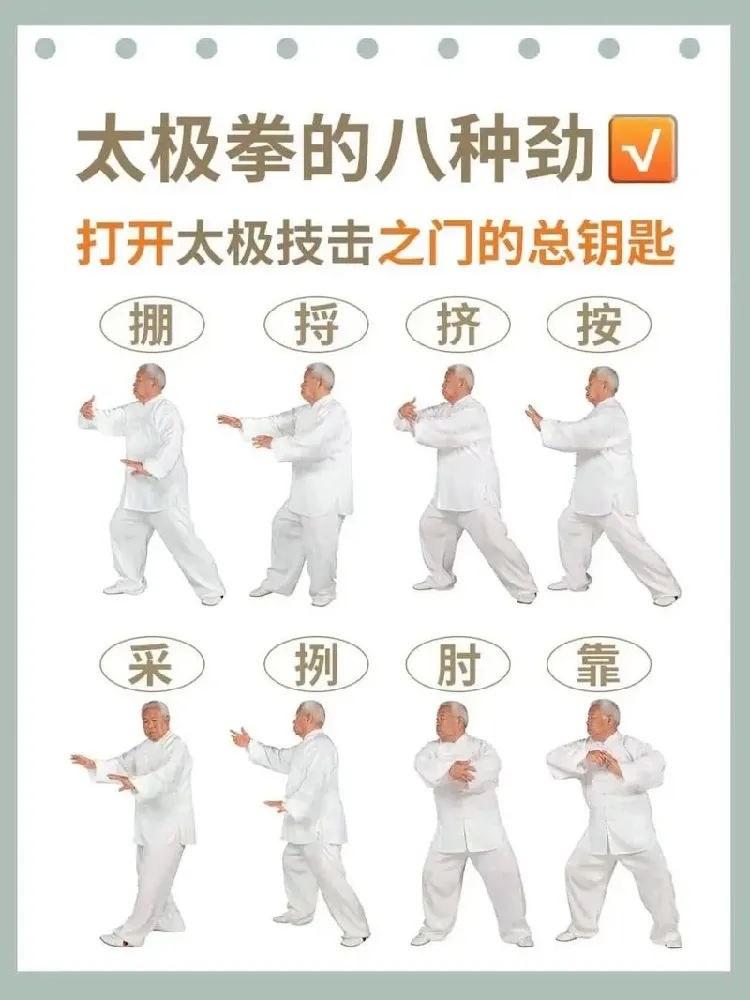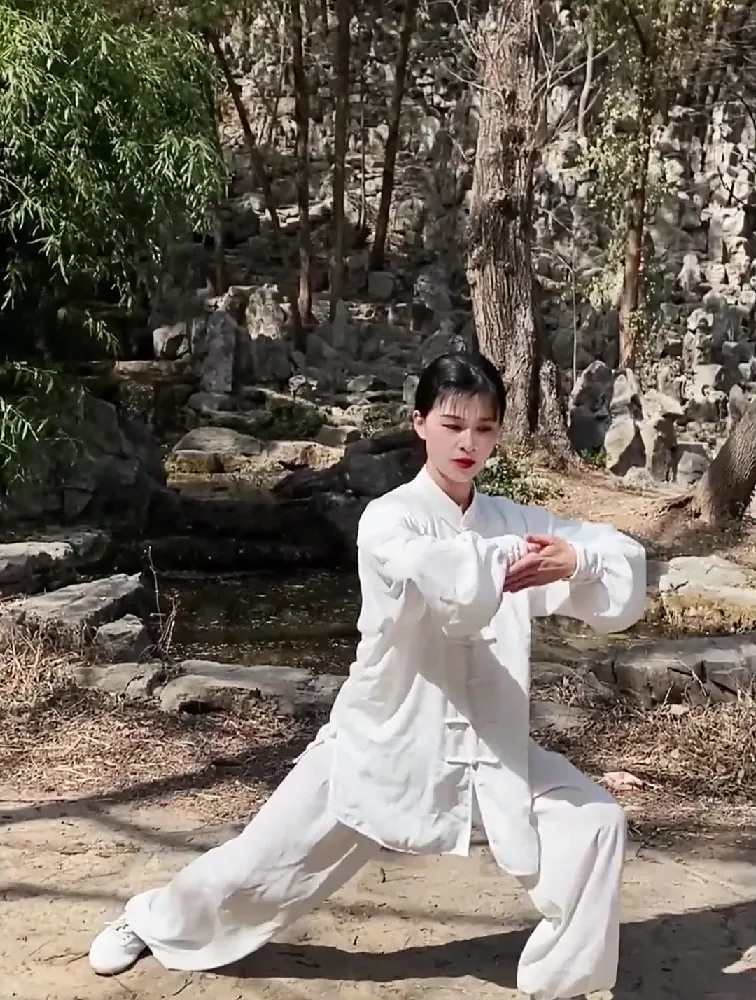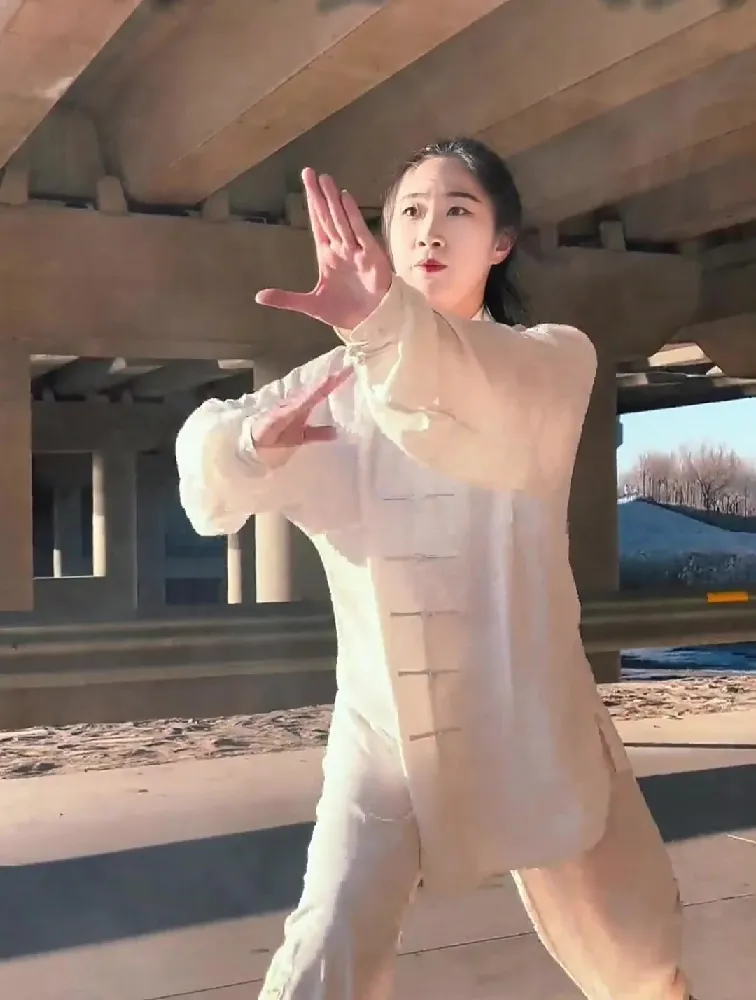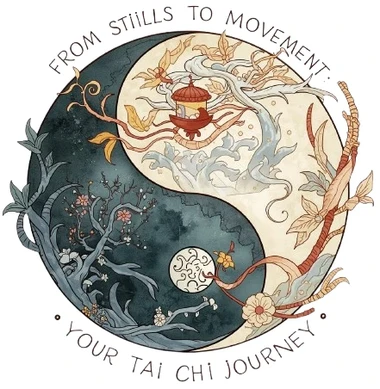Beyond the Dance: The Hidden Energies Inside Tai Chi
You’ve learned the flowing forms. You can shift your weight with grace. But have you ever wondered—what gives Tai Chi its hidden power?
The answer lies in the Tai Chi 8 techniques. Eight distinct energies. Eight invisible forces that turn movement into meaning.
They’re called the “Eight Gates.” And once you feel them, your practice will never be the same.
Most people stop at the surface. They copy the shapes. They memorize the steps. But they miss the internal power—the Tai Chi basic energies that make the art come alive.
This guide is your invitation. We’ll explore the first four gates—Peng, Lu, Ji, An—the core of “Grasp the Bird’s Tail.” You’ll learn how to feel them, use them, and understand their role in Tai Chi martial application.
Let’s begin.

What Are the Eight Gates of Tai Chi?
Tai Chi isn’t just movement. It’s energy in motion. The Eight Gates are the energetic building blocks of every form, every push, every spiral.
They’re part of the classic “Eight Gates and Five Steps” framework. Think of them as eight ways your body can express force, receive force, and transform it.
The Four Primary Techniques (Cardinal Directions)
These are the ones you’ll use most often:
- Peng – Ward Off
- Lu – Roll Back
- Ji – Press
- An – Push
They correspond to the four cardinal directions—front, back, left, right. They’re the foundation of internal martial arts and the heart of Tai Chi’s energy language.
The Four Corner Techniques (Diagonal Directions)
These are more advanced, but equally important:
- Cai – Pluck
- Lie – Split
- Zhou – Elbow
- Kao – Shoulder
Together, they form a complete system. But today, we’ll focus on the first four—because they’re the ones you’ll feel first.
💡 Exclusive Tip: Don’t rush to learn all eight. Mastering Peng, Lu, Ji, An will unlock the rest naturally.
Peng: The Energy of Expansion
Let’s start with Peng energy. It’s the first gate—and the most misunderstood.
Peng isn’t a block. It’s not a push. It’s an expanding force—like a balloon inflating in all directions.
What Peng Feels Like
Imagine your arms filled with air. Your spine rising. Your body buoyant, yet stable.
Peng is everywhere. It’s the energy that keeps you upright, connected, and resilient.
You’re not resisting force. You’re absorbing it, redirecting it, and staying whole.
Common Mistakes
- Using stiff muscles to “hold” the shape
- Leaning into the opponent
- Forgetting to connect Peng through the whole body
💡 Exclusive Tip: Practice standing with arms rounded, like hugging a tree. Feel the gentle outward pressure. That’s Peng.
Lu: The Energy of Guiding
Next comes Lu—the art of yielding. It’s soft, subtle, and strategic.
Lu doesn’t fight force. It listens to it. Then it guides it away.
What Lu Feels Like
Picture a stream flowing around a rock. Or silk being gently pulled through your fingers.
Lu is contact without resistance. You connect, sense, and lead the energy into emptiness.
It’s the ultimate “don’t fight back” technique.
Common Mistakes
- Pulling too hard
- Losing structure while yielding
- Trying to “win” the exchange
💡 Exclusive Tip: Practice Lu with a partner using slow push hands. Focus on sensing—not reacting. Let their force guide your movement.
Ji: The Energy of Compression
Now we get to Ji—the press. It’s focused, direct, and powerful.
Ji isn’t brute force. It’s the convergence of energy. Like a piston compressing air.
What Ji Feels Like
Your rear leg pushes. Your spine aligns. Your arms press forward—not with muscle, but with whole-body integration.
Ji is the moment when Yin turns into Yang. When softness becomes expression.
Common Mistakes
- Using only the arms
- Forgetting to root through the rear leg
- Pressing without intention
💡 Exclusive Tip: Try Ji with two hands on a wall. Press gently, then engage your rear leg. Feel the difference when the whole body joins in.
An: The Energy of Sinking
Finally, we arrive at An—the push. But it’s not just a shove. It’s a downward, sinking release.
An is like pressing a ball into water. It goes down, then forward. It’s grounded, calm, and decisive.
What An Feels Like
Your hips sink. Your breath deepens. Your hands move forward—not from the shoulders, but from the earth beneath you.
An is the final release. The culmination of listening, guiding, compressing—and then letting go.
Common Mistakes
Leaning forward
Using upper-body strength
Forgetting to sink before pushing
💡Exclusive Tip: Practice An by imagining your hands pressing into a soft cushion. Let your hips do the work—not your arms.

Feeling the Flow: Peng, Lu, Ji, An in “Grasp the Bird’s Tail”
You’ve probably practiced “Grasp the Bird’s Tail” dozens of times. But have you ever felt the energy behind each move?
This sequence isn’t just choreography. It’s a living conversation between the four gates. Each movement flows into the next—like a story told through your body.
Let’s break it down:
Peng: The Opening Gesture
Peng begins the dialogue. You meet your partner’s energy—not with resistance, but with expansion. Your arms round. Your spine lifts. Your body becomes a buoyant sphere.
It’s the moment of contact. You say, “I’m here. I’m whole. I’m listening.”
Lu: The Gentle Redirect
Next comes Lu. You receive their energy. You guide it away—not with force, but with finesse.
Your hands move back and to the side. Your hips turn. Your weight shifts.
It’s like saying, “I hear you. Let’s go this way instead.”
Ji: The Focused Response
Then comes Ji. You compress. You gather. You press forward—not to attack, but to express.
Your rear leg drives the motion. Your spine aligns. Your arms converge.
It’s the moment you say, “Here’s my answer.”
An: The Grounded Release
Finally, An. You sink. You settle. You release the energy downward and forward.
It’s not a shove. It’s a letting go. A peaceful push that says, “We’re done here.”
💡 Exclusive Tip: Practice “Grasp the Bird’s Tail” slowly, with full attention on the transitions. Feel how each energy flows into the next. That’s Tai Chi’s hidden rhythm.

Why You Need to Understand the Eight Gates
Let’s be honest. Tai Chi can feel mysterious. All those poetic names. All that talk of Qi and intention.
But the Eight Gates are practical. They’re the grammar of Tai Chi’s movement language.
From Fitness to Feeling
When you understand the gates, your practice deepens. You stop mimicking shapes. You start expressing energy.
Every movement becomes alive. Every form becomes a conversation.
It’s the difference between reciting a poem and feeling its meaning.
From Movement to Martial Awareness
Even if you’re not training for combat, the martial roots matter. They teach you how to:
- Stay rooted under pressure
- Yield without collapsing
- Express without aggression
- Listen with your whole body
Tai Chi for self-defense isn’t about fighting. It’s about awareness. It’s about knowing how to respond—not react.
💡 Exclusive Tip: Try practicing with a partner using light contact. Focus on sensing their intention. That’s where martial awareness begins.
Push Hands: The Playground of the Eight Gates
Push hands isn’t a contest. It’s a lab. A place to test your understanding of energy.
Each gate shows up in real time:
- Peng keeps you stable
- Lu helps you redirect
- Ji lets you respond
- An gives you closure
When you feel these energies in push hands, you stop guessing. You start listening. You start responding.
It’s like learning a new language—and finally understanding what your partner is saying.
💡 Exclusive Tip: During push hands, pause after each exchange. Ask: “Was that Peng? Was that Lu?” Naming the energy builds fluency.
Conclusion: Opening the Real Gate to Tai Chi
Tai Chi isn’t just graceful movement. It’s a language. And the Tai Chi 8 techniques are its alphabet.
When you understand Peng, Lu, Ji, An, you stop copying forms. You start expressing energy. You begin to feel—not just move.
These aren’t just martial tools. They’re life tools. They teach you how to:
- Expand without aggression (Peng)
- Yield without collapse (Lu)
- Respond with clarity (Ji)
- Release with peace (An)
Whether you’re practicing for health, meditation, or Tai Chi for self defense, these energies give your movements meaning. They connect you to the deeper rhythm of internal martial arts. They help you “grasp the bird’s tail”—not just physically, but energetically.
💡 Exclusive Tip: Revisit your favorite form this week. Instead of focusing on shape, ask: “What energy am I expressing here?” That one question can transform your entire practice.
Gentle Rebuttal: “Isn’t This Too Advanced for Beginners?”
I hear this often. But here’s the truth: You don’t need to master all eight gates overnight. You just need to start noticing.
Even beginners can feel Peng. Even casual practitioners can guide with Lu. Even solo players can press with Ji and release with An.
It’s not about being perfect. It’s about being present. And once you feel the energy, you’ll never go back to empty shapes.
Move Beyond the Form
Ready to explore the deeper layers of Tai Chi?
- Join our “Internal Energy & Applications” course at Taichi Academy. We break down all eight techniques with drills, partner work, and solo methods.
- Or start today: Download our FREE “8 Gates Cheat Sheet”—a visual guide to the energies and their applications. Keep it by your mat. Let it guide your practice.
Your body already knows how to move. Tai Chi just teaches you how to listen.
The Deep Roots of Tai Chi's 8 Gates: From Ancient Secrets to Standardized Practice
Common Questions from Curious Beginners
Do I need to learn the Eight Gates if I’m just doing Tai Chi for health?
Yes. Because health isn’t just movement—it’s meaningful movement. Understanding the gates helps you: Engage your whole body Improve posture and alignment Deepen breath and intention Cultivate internal strength Even if you never spar, the gates make your practice richer.
How can I practice these energies alone?
Great question. Here are a few solo drills: Peng: Stand in tree-hugging posture. Feel the outward expansion. Lu: Practice slow, spiraling arm movements. Imagine guiding force away. Ji: Press gently into a wall. Engage your rear leg. An: Sink your hips while pushing forward. Feel the downward release. You can also use props—like a Tai Chi ball, a tree trunk, or even a mirror—to visualize and refine your energy.
Q: Will this make my Tai Chi aggressive?
Not at all. Understanding energy isn’t about domination. It’s about dialogue. It’s about knowing when to yield, when to respond, and when to let go. In fact, the Eight Gates teach you how to avoid conflict. How to stay calm. How to move with wisdom. 💡 Exclusive Tip: Think of the gates as emotional skills. Peng is confidence. Lu is empathy. Ji is clarity. An is closure.
